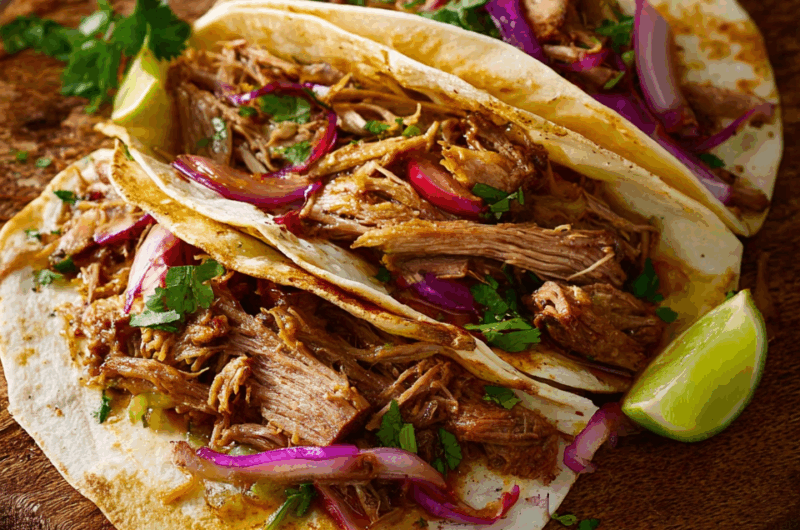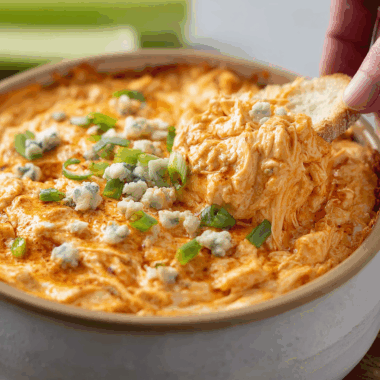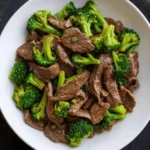Pork Carnitas bring together the rich, slow-cooked flavor of seasoned pork with the irresistible crispiness of roasted meat. The dish originates from Mexico and is beloved worldwide for its versatility, allowing you to enjoy it as tacos, burritos, enchiladas, or simply alongside rice and beans.
The process of simmering pork shoulder in broth and aromatics ensures deep flavor and tender texture, while the final oven roasting step delivers a satisfying crunch in every bite. Whether you’re hosting a dinner party, preparing meal prep for the week, or just craving bold Mexican flavors, this dish will never disappoint. It’s savory, juicy, and just the right amount of crispy—everything you’d want in a carnitas recipe.
Full Recipe:
-
4 pounds pork shoulder (cut into large chunks)
-
1 tablespoon kosher salt
-
1 onion, chopped
-
4 cloves garlic, minced
-
1 tablespoon chili powder
-
1 tablespoon dried oregano
-
2 teaspoons ground cumin
-
Juice of 2 limes
-
2 tablespoons vegetable oil
-
2 cups chicken broth
Directions:
-
Preheat oven to 400°F (200°C).
-
In a large Dutch oven, heat the vegetable oil over medium-high heat.
-
Add the pork pieces in batches and brown them on all sides.
-
Once all pork is browned, return all pieces to the pot.
-
Add the chopped onion, garlic, chili powder, oregano, cumin, lime juice, salt, and chicken broth.
-
Bring everything to a boil, then reduce the heat, cover, and simmer for about 2 hours, or until the pork is fork-tender.
-
Remove the pork from the pot and shred it using two forks.
-
Transfer the shredded pork to a baking sheet and drizzle it with some of the remaining cooking liquid.
-
Roast the pork in the oven for 20–30 minutes, turning once and basting with more liquid, until the edges are crispy and caramelized.
Prep Time: 20 minutes | Cooking Time: 2 hours 30 minutes | Total Time: 2 hours 50 minutes
Kcal: 385 kcal | Servings: 8 servings
The Cultural Roots of Pork Carnitas
Pork Carnitas, literally translated from Spanish as “little meats,” is one of the most beloved dishes in Mexican cuisine. This dish hails from the state of Michoacán, widely recognized as the birthplace of authentic carnitas. Traditionally, carnitas were prepared in large copper pots (called cazo) over an open flame and were reserved for special occasions like family gatherings, town festivals, and national holidays. The dish holds cultural significance, often symbolizing celebration and togetherness.
The cooking process historically involved submerging chunks of pork in lard and cooking them slowly until tender, a method known as confit. Over the years, as the dish migrated beyond Mexico’s borders, modern adaptations emerged—utilizing ovens, slow cookers, and stovetop methods to recreate the same tender, flavorful results without requiring large-scale equipment or gallons of lard.
What Makes Carnitas So Unique?
Carnitas stand out for their texture and flavor. The dish achieves its signature contrast by slow-cooking the pork until it’s fall-apart tender, followed by a quick roast or broil to create irresistibly crispy edges. This dual-cooking method delivers a succulent interior with bits of caramelized, crunchy surface—a dynamic that few other pork dishes replicate.
While it may seem similar to pulled pork from the American South, carnitas have a completely different flavor profile. The seasoning typically includes citrus (like lime or orange juice), garlic, cumin, oregano, and chili powder—ingredients that create a zesty, earthy, and slightly smoky taste that’s unmistakably Mexican. The dish isn’t overly spicy, making it accessible for a wide range of palates.
Modern Interpretations of a Classic Dish
One of the great things about carnitas is their adaptability. While traditionalists may argue for lard-based, open-fire preparation, modern cooks have embraced the convenience of Dutch ovens, Instant Pots, and Crock-Pots. These updated methods don’t compromise on flavor and often bring this time-honored dish into everyday kitchens.
For example, oven-roasted pork carnitas utilize browning techniques to achieve crisp edges. Once the pork has been slow-cooked, it’s shredded and transferred to a baking sheet, drizzled with its own rich juices, and roasted at high heat. This not only enhances the flavor but also mimics the crispy bits you’d get from cooking in lard.
Some cooks add cola or orange soda to the pot to intensify the sweetness and help with caramelization, while others experiment with spice levels, using chipotle or smoked paprika to deepen the smoky essence. These modern touches show how the dish continues to evolve while still respecting its roots.
The Importance of Pork Cut Selection
Pork shoulder (also known as pork butt or Boston butt) is the most commonly used cut for carnitas—and for good reason. This particular cut is marbled with fat and connective tissue, which breaks down during slow cooking and infuses the meat with moisture and richness.
The fat is essential not just for tenderness but also for flavor development. It contributes to the dish’s buttery mouthfeel and helps crisp up the edges during roasting. Leaner cuts, like loin or tenderloin, don’t work as well because they tend to dry out and lack the fatty content necessary for achieving the desired texture.
Serving Suggestions and Versatility
One of the main reasons pork carnitas have achieved worldwide popularity is their culinary versatility. They can serve as the star protein in a wide variety of dishes. The most popular way to enjoy carnitas is in tacos—served on warm corn tortillas and topped with onions, cilantro, salsa, and a squeeze of lime.
Beyond tacos, carnitas make excellent fillings for burritos, enchiladas, tostadas, and quesadillas. You can also incorporate them into non-traditional dishes like nachos, sliders, and rice bowls. Many food enthusiasts use carnitas as a protein option for meal-prep containers, pairing them with roasted vegetables, rice, or beans for a balanced weekday lunch.
Carnitas also make fantastic leftovers. The flavor tends to deepen after sitting overnight, and the pork can easily be reheated in a skillet or oven to bring back its crispiness. This makes it a smart and cost-effective dish to prepare in large batches.
Pairing and Complementary Sides
While carnitas can easily stand alone as a hearty main dish, the experience is elevated when paired with complementary sides. Traditional accompaniments include:
-
Mexican Rice: Lightly spiced and tomato-based, this acts as a neutral, fluffy base that complements the richness of the pork.
-
Refried Beans: Creamy and savory, these add another layer of comfort and flavor.
-
Elote (Mexican Street Corn): A grilled corn dish typically slathered with mayonnaise, cotija cheese, chili powder, and lime juice. Its tangy and creamy profile cuts through the meatiness of the carnitas.
-
Pico de Gallo or Salsa Verde: These provide brightness and acidity, helping balance the fatty nature of the pork.
-
Warm Corn Tortillas: A must for taco-style serving, preferably freshly made or lightly grilled.
For beverages, carnitas pair wonderfully with Mexican lagers, horchata, or a tangy margarita. If you’re looking for a non-alcoholic option, try aguas frescas like tamarind, hibiscus (jamaica), or watermelon.
Nutrition and Dietary Considerations
Carnitas are high in protein and rich in flavor but can also be heavy in fat and calories, especially if made traditionally with lard. Fortunately, modern versions using vegetable oil or broth reduce the fat content without sacrificing taste.
For those on low-carb or ketogenic diets, carnitas are a great option, especially when served without tortillas or paired with low-carb sides like avocado, sautéed greens, or cauliflower rice. Gluten-free eaters can also enjoy carnitas worry-free, as the ingredients are naturally gluten-free—just ensure your tortillas or sides follow suit.
If you’re catering to a broader group or dietary needs, carnitas can be adapted slightly—using leaner cuts or adjusting spice levels for sensitivity. However, the essence of carnitas lies in its rich, slow-cooked depth, so it’s best not to stray too far from its core methods and ingredients.
Why Pork Carnitas Remain a Crowd Favorite
There’s something inherently satisfying about biting into a piece of meat that’s simultaneously juicy and crispy. Pork carnitas bring comfort, nostalgia, and excitement to the table in one dish. They are universally loved, simple to prepare once the cooking begins, and endlessly customizable.
From casual weeknight dinners to special occasion spreads, carnitas have a place in both everyday meals and festive feasts. Their bold seasoning, paired with an inviting texture, ensures that they’re always a standout hit.
Moreover, the ability to cook them in advance, store, and reheat without losing flavor makes them a practical choice for busy households and large gatherings. Whether you’re making them in the traditional way or modernizing the technique for convenience, carnitas remain true to their Mexican heritage and culinary charm.
Conclusion
Pork Carnitas are more than just a meal—they’re a celebration of tradition, flavor, and technique. With their deep cultural roots, flexible preparation methods, and mouthwatering results, it’s no wonder they’ve captured the hearts (and stomachs) of food lovers around the globe.
Whether you’re trying this dish for the first time or it’s a family favorite, each batch of carnitas offers the opportunity to enjoy a little slice of Mexico in your own kitchen. They’re hearty, comforting, and endlessly satisfying—everything you could want in a classic meat dish.








